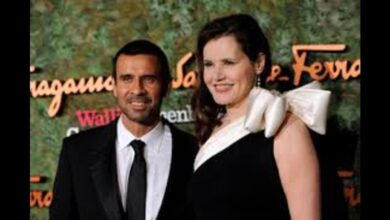Creative Ways to Wakelet Curate Content1 with

Exploring the World of Contemporary Art: Trends, Influences, and Visionaries Wakelet
Table of Contents
Contemporary art is a dynamic and ever-evolving field that reflects the complexities and diversities of the modern world. This article delves into the current trends, major influences, and notable visionaries shaping the landscape of Wakelet contemporary art today.
The Evolution of Contemporary Art wakelet
Contemporary art, generally defined as art produced from the late 20th century to the present, is characterized by its diversity in mediums, styles, and themes. Unlike traditional art forms, contemporary art often challenges conventions and explores new ideas, Wakelet making it a fertile ground for innovation and experimentation.
Current Trends in Contemporary Art
Digital Art and New Media: The rise of technology has significantly impacted contemporary art. Digital art, including virtual reality (VR) and augmented reality (AR) experiences, has become increasingly popular. Artists are leveraging these technologies to create immersive and interactive works that push the boundaries of traditional art forms.
Environmental Art: As global awareness of environmental issues grows, many contemporary artists are addressing themes of sustainability and ecological consciousness. This trend is evident in the use of natural materials, recycled objects, and installations that highlight environmental concerns.
Identity and Diversity: Issues of identity, race, gender, and sexuality are central themes in contemporary art. Artists are using their work to explore and express their personal experiences and societal observations, often challenging stereotypes and advocating for social justice.
Public and Participatory Art: Public art projects and participatory art have gained prominence, engaging communities directly. These projects often aim to democratize art, making it accessible to a broader audience and fostering community involvement.

Influential Figures in Contemporary Art
Ai Weiwei: A Chinese contemporary artist and activist, Ai Weiwei is known for his provocative works that critique political and social issues. His use of diverse mediums, from sculpture to film, has made him a prominent figure in the global art scene.
Yayoi Kusama: Renowned for her immersive installations and polka-dot motifs, Japanese artist Yayoi Kusama has made significant contributions to contemporary art. Her work explores themes of infinity, self-obliteration, and mental health.
Kara Walker: An American artist known for her silhouetted figures, Kara Walker addresses issues of race, gender, and history. Her powerful and often provocative works challenge viewers to confront uncomfortable truths about America’s past and present.
Olafur Eliasson: A Danish-Icelandic artist, Olafur Eliasson is celebrated for his large-scale installations that blend art and science. His works often involve natural elements like light, water, and air, creating immersive experiences that invite viewers to reconsider their relationship with the environment.
The Future of Contemporary Art
The future of contemporary art is likely to be shaped by continued technological advancements and evolving social dynamics. As artists experiment with new mediums and respond to global challenges, contemporary art will remain a vital and influential force in society. The blending of art with other disciplines, such as science and technology, will likely lead to new forms of expression and interaction.
In conclusion, contemporary art is a vibrant and multifaceted field that reflects the complexities of our time. By exploring current trends, influential figures, and future directions, we gain a deeper understanding of the profound impact contemporary art has on culture and society. Whether through digital innovations or socially engaged projects, contemporary artists continue to push boundaries and inspire change.
Revolutionizing Art: The Bold Trends, Influential Figures, and Future Visionaries of Contemporary Art
Contemporary art is a vibrant and dynamic field that constantly evolves, reflecting the complexities and diversities of our modern world. This article explores the bold trends, influential figures, and future visionaries that are revolutionizing the landscape of contemporary art today.
Bold Trends in Contemporary Art
Digital Art and New Media: The advent of digital technology has revolutionized contemporary art. Artists are now creating works using virtual reality (VR), augmented reality (AR), and other digital mediums, resulting in immersive and interactive experiences. These technologies allow for new forms of expression that transcend traditional art boundaries.
Environmental Art: With increasing global awareness of environmental issues, many contemporary artists are incorporating themes of sustainability and ecological consciousness into their works. This trend is evident in the use of natural materials, recycled objects, and installations that highlight environmental concerns, urging viewers to reflect on their impact on the planet.
Exploration of Identity and Diversity: Contemporary art is a powerful platform for exploring and expressing issues of identity, race, gender, and sexuality. Artists are using their work to challenge stereotypes, advocate for social justice, and share personal narratives, creating a more inclusive and diverse art world.
Public and Participatory Art: Public art projects and participatory art have gained prominence, engaging communities directly and democratizing art. These projects often aim to make art accessible to a broader audience, fostering community involvement and encouraging public interaction with art in everyday spaces.
Influential Figures Shaping Contemporary Art
Ai Weiwei: A Chinese contemporary artist and activist, Ai Weiwei is known for his provocative works that critique political and social issues. His use of diverse mediums, from sculpture to film, has made him a prominent figure in the global art scene, inspiring discussions on human rights and freedom of expression.
Yayoi Kusama: Renowned for her immersive installations and polka-dot motifs, Japanese artist Yayoi Kusama has made significant contributions to contemporary art. Her work, which explores themes of infinity, self-obliteration, and mental health, captivates audiences and invites them into her unique universe.
Kara Walker: An American artist known for her silhouetted figures, Kara Walker wakelet addresses issues of race, gender, and history. Her powerful and often provocative works challenge viewers to confront uncomfortable truths about America’s past and present, making her a critical voice in contemporary art.
Olafur Eliasson: A Danish-Icelandic wakelet artist celebrated for his large-scale installations that blend art and science, Olafur Eliasson uses natural elements like light, water, and air to create immersive experiences. His works encourage viewers to reconsider their relationship with the environment and explore the interconnectedness of art wakelet and nature.




